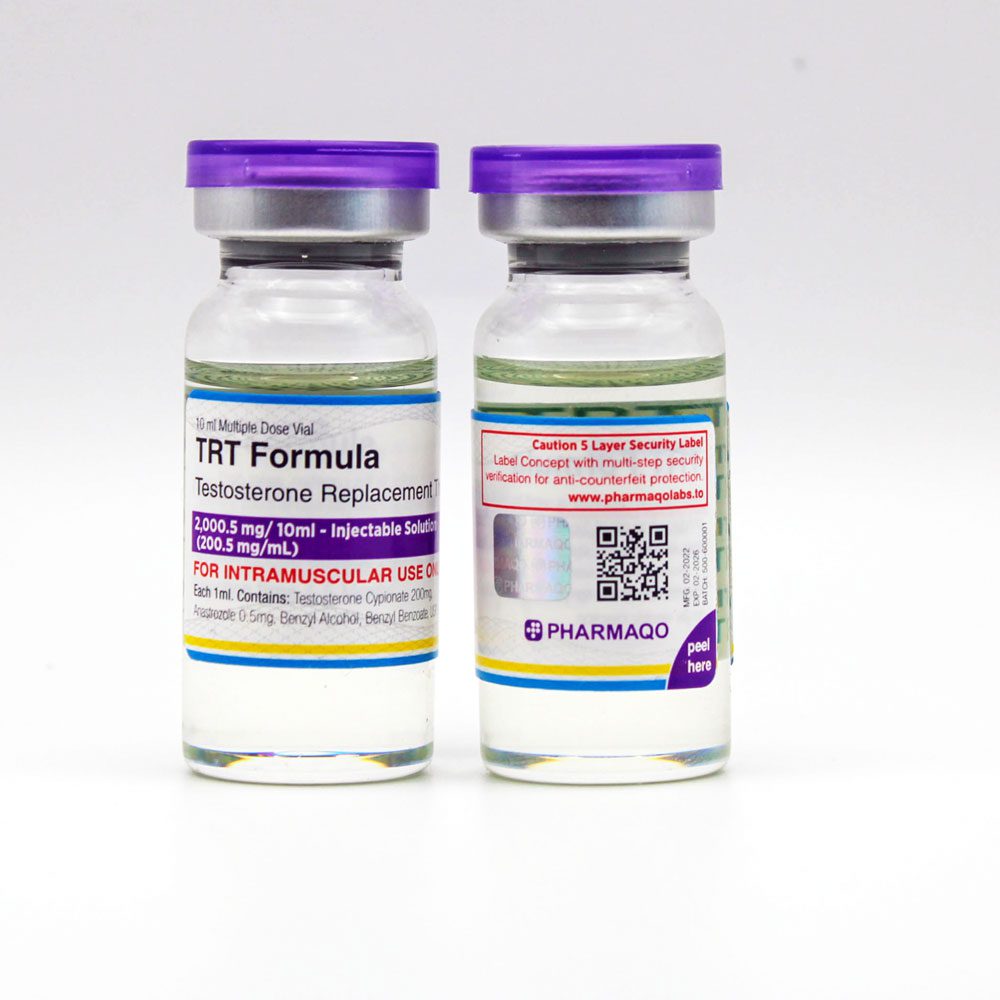How Much Will 100 mg of Testosterone Raise Levels? | Pharmaqo
Testosterone Replacement Therapy (TRT) is a standard solution for men experiencing low testosterone levels—a condition medically known as hypogonadism. One question that frequently arises is: How much will 100 mg of testosterone raise levels? This is a crucial inquiry for anyone considering or already on TRT, as the answer impacts your treatment success, well-being, and long-term health.
Let’s unpack this in a research-backed, straightforward manner.
Is 100 mg of Testosterone Enough?
For many individuals, 100 mg of testosterone enanthate or cypionate per week is a foundational TRT dose. Clinical research suggests this amount often elevates serum testosterone into the mid to upper physiological range.
According to a peer-reviewed study published in the Journal of Clinical Endocrinology & Metabolism, administering 100 mg/week can raise testosterone levels to 700–1000 ng/dL in most men. However, this range is not universal—your biology plays a significant role.
Factors That Affect How Much 100 mg Raises Testosterone
1. Injection Frequency & Method
The administration route (intramuscular or subcutaneous) and how often you inject can dramatically impact serum levels.
- Intramuscular (IM) injections typically lead to a faster peak and a slower decline.
- Subcutaneous injections may produce a more stable release with fewer side effects when split into bi-weekly doses.
You can learn more about TRT optimization here.
2. Metabolic Rate
Due to genetic and hormonal differences, some individuals metabolize testosterone more quickly. A fast metabolizer might experience a shorter duration of effectiveness, requiring either a higher dose or more frequent injections.
3. Body Composition
Men with higher body fat percentages tend to convert more testosterone into estrogen through the aromatase enzyme. This means they may see lower net testosterone levels after a standard dose.
4. Sex Hormone-Binding Globulin (SHBG)
Testosterone binds to SHBG in your blood. Higher SHBG levels can reduce the amount of free testosterone—which is the bioavailable form responsible for most androgenic effects.
For men with high SHBG, even a dose that looks effective on paper might not translate to symptom relief.
How Fast Will You See a Testosterone Increase?
Typically, testosterone levels peak within 48–72 hours of injection. By day 5–7, they start to taper off. This timeline aligns with findings from a study on PubMed, which showed that 100 mg/week raised testosterone levels from 400 to 800+ ng/dL over several weeks.
On forums like Reddit TRT, many users share similar experiences—reporting improved mood, energy, and libido within 2–4 weeks.
Microdosing: The Evolving Approach
Traditional once-weekly injections are effective but can cause hormonal peaks and valleys. Microdosing TRT involves administering smaller doses multiple times weekly (e.g., 20–30 mg every 2 days), resulting in more consistent blood levels.
Clinics like The Men’s Health Clinic have shown how microdosing can mimic the body’s natural rhythm, reduce side effects, and enhance patient satisfaction.
Why Monitoring Is Non-Negotiable
Monitoring testosterone levels ensures your treatment is safe and effective. At Pharmaqo, we recommend:
- Baseline testing before starting TRT
- Follow-up labs after 6–8 weeks
- Regular testing every 3–6 months
Important labs include:
- Total Testosterone
- Free Testosterone
- Estradiol (E2)
- SHBG
- Hematocrit and Hemoglobin
- LH & FSH (if fertility is a concern)
You can find our complete testosterone support protocols in our TRT guide.
Signs Your Levels May Still Be Low
If you’re on 100 mg per week and still experiencing:
- Fatigue
- Brain fog
- Low libido
- Mood swings
…your levels might not be optimal. Bloodwork will confirm whether you need dose adjustments or other hormone support (like HCG or aromatase inhibitors).
Common Mistakes with 100 mg Testosterone Dose
- Skipping Labs
- Never guess your levels. You might be under-medicating or overdosing without realizing it.
- Not Addressing Estrogen
- Testosterone converts to estrogen. High levels may cause water retention, gynecomastia, and irritability if you’re not tracking estradiol.
- Inconsistent Dosing
- Missing or delaying doses leads to unstable hormone levels and inconsistent benefits.
- Ignoring Symptoms
- Some users rely solely on lab values. However, symptom relief is just as significant as numbers on a lab report.
To sum it up, 100 mg of testosterone can raise your levels to the mid-normal range for most adult males. Results vary based on metabolism, body composition, injection frequency, and SHBG levels.
This dose helps men reclaim energy, strength, libido, and mood when properly monitored and administered. But it’s not one-size-fits-all. Personalized care, routine labs, and expert guidance make all the difference.
At Pharmaqo, we provide pharmaceutical-grade TRT products that support safe, science-based protocols. Whether starting your journey or fine-tuning your dose, our team is here to guide you with reliable information and best-in-class products.
Leave a comment